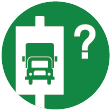
No signage indicating that no trucks are allowed on this street unless they are making deliveries.
The NYC Truck Route Network is a system of designated roads that helps commercial vehicles navigate the city efficiently. It aims to:
Connect primary freight origins and destinations.
Maximize access to industrial and commercial zones.
Minimize conflicts with residential areas and vulnerable road users.
This network is crucial for supporting the local economy and livability by:
Organizing neighborhood truck activity
Reducing traffic congestion on non-designated routes
Feedback Guidance:
We want to hear from you, help us identify how and where we can improve the movement of trucks on our city streets.
Options for feedback:
 Confusing Truck Route Signage: A Unclear or inaccurate posted truck route signage
Confusing Truck Route Signage: A Unclear or inaccurate posted truck route signage
 Missing Truck Route Signage: A lack of adequate signage to help guide trucks to and along designated truck routes.
Missing Truck Route Signage: A lack of adequate signage to help guide trucks to and along designated truck routes.
 Poor network connection: Areas with inadequate truck route network connectivity, often leading truck drivers to deviate from designated truck routes.
Poor network connection: Areas with inadequate truck route network connectivity, often leading truck drivers to deviate from designated truck routes.
 Weight & Height Restrictions: Overweight and/ or over-dimensional trucks are often observed.
Weight & Height Restrictions: Overweight and/ or over-dimensional trucks are often observed.
 Limited Curb Access: Trucks observed blocking moving, bike, or bus lanes; or have limited access to curbs for loading and unloading purposes.
Limited Curb Access: Trucks observed blocking moving, bike, or bus lanes; or have limited access to curbs for loading and unloading purposes.
 Narrow Roadway: Limitations by the physical characteristics of the street, such as narrow roadway
Narrow Roadway: Limitations by the physical characteristics of the street, such as narrow roadway
 Difficult Truck Turn: Limitations by the physical characteristics of the street, such as sharp turns
Difficult Truck Turn: Limitations by the physical characteristics of the street, such as sharp turns
 Maintenance Needed: Substandard road conditions, such as potholes, uneven surfaces, or lack of maintenance.
Maintenance Needed: Substandard road conditions, such as potholes, uneven surfaces, or lack of maintenance.
 Limited Truck Parking: Shortage of designated parking spaces for trucks.
Limited Truck Parking: Shortage of designated parking spaces for trucks.
 Observed Bicyclist and Truck Conflict: Observed locations where multiple incidents of bicycle and truck conflicts occurred
Observed Bicyclist and Truck Conflict: Observed locations where multiple incidents of bicycle and truck conflicts occurred
 Observed Pedestrian and Truck Conflict: Observed locations where multiple incidents of pedestrian and truck conflicts occurred
Observed Pedestrian and Truck Conflict: Observed locations where multiple incidents of pedestrian and truck conflicts occurred
 Speeding Truck: Locations where trucks are observed speeding along the street or intersection
Speeding Truck: Locations where trucks are observed speeding along the street or intersection
 Health and Environmental Impact: Locations with air quality, general health, and environmental concerns
Health and Environmental Impact: Locations with air quality, general health, and environmental concerns

No signage indicating that no trucks are allowed on this street unless they are making deliveries.

Large over-sided delivery trucks constantly speed down this street to avoid the congestion caused on 5th avenue because of other double parked trucks making deliveries. The speed is not only unsafe for pedestrians but also it is creating potholes in the street where I have witnessed people on bikes and scooters hitting the holes and falling.
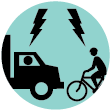
Intense truck traffic with no safe bike lanes! Please help!

We desperately need safe, completely protected bike lanes that trucks can’t park in
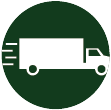
Consistent trucks moving rapidly (usps, tractor trailors, etc) especially early morning. Very hazardous given narrow street and not even on a truck route

Huge speeding delivery trucks come down the street constantly. They also double park at the end of the street closer to 5th ave making deliveries.
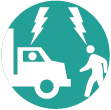
I am afraid to cross this intersection because so many cars and trucks run through the red light trying to either get onto the BQE or to get through the incredibly congested intersection. We detour and cross Atlantic at Henry Street instead and avoid this intersection entirely it is so dangerous.
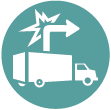
Large trucks travel up Columbia to access the Queens-bound BQE entrance (usually traveling by local road to avoid the BQE traffic on the trench). They turn right from Columbia onto Atlantic to get into a left turn lane to access the BQE entrance. Because of congestion, these large trucks end up blocking the intersection, and other cars that aren't getting on the BQE can't make the right hand turn onto Atlantic, including the B61 bus (which itself is large so cannot squeeze past a truck the way a car might be able to). This further exacerbates the congestion on Columbia Street and Atlantic Avenue and increases the danger to pedestrians trying to cross, who often have obstructed views of pedestrian crossing signals and have to walk around trucks with blind spots to incoming traffic.

Large trucks travel up Hicks Street to access the Queens-bound BQE entrance (usually traveling by local road to avoid the BQE traffic on the trench). They turn left from Hicks onto Atlantic to access the the BQE entrance. Because of congestion, these large trucks end up blocking the intersection, and other cars that aren't getting on the BQE can't go straight on Hicks or make the right or left hand turns onto Atlantic Avenue. This further exacerbates traffic on Hicks Street and Atlantic Avenue and increases the danger to pedestrians trying to cross, who often have obstructed views of pedestrian crossing signals and have to walk around trucks with blind spots to incoming traffic.

Large trucks travel up Columbia to access the BQE Queens-bound BQE entrance (usually traveling by local road to avoid the BQE traffic on the trench). They turn right from Columbia onto Atlantic to get into a left turn lane to access the BQE entrance. Because of congestion, these large trucks end up blocking the intersection, and other cars that aren't getting on the BQE can't make the right hand turn onto Atlantic. This further exacerbates the congestion on Columbia Street and Atlantic Avenue and increases the danger to pedestrians trying to cross, who often have obstructed views of pedestrian crossing signals and have to walk around trucks with blind spots to incoming traffic.
Comments should be related to the posted topic or specific project. The Projects and Initiatives website is not meant for comments that do not directly relate to the purpose or topic of the specific project. For general comments or communications concerning an agency, please contact the agency's Commissioner on www.NYC.gov. For service requests, please contact 311 Online.
Pan left or rigth to show the area you wish to comment on.
To add your comments:
How do you want to submit your comment: